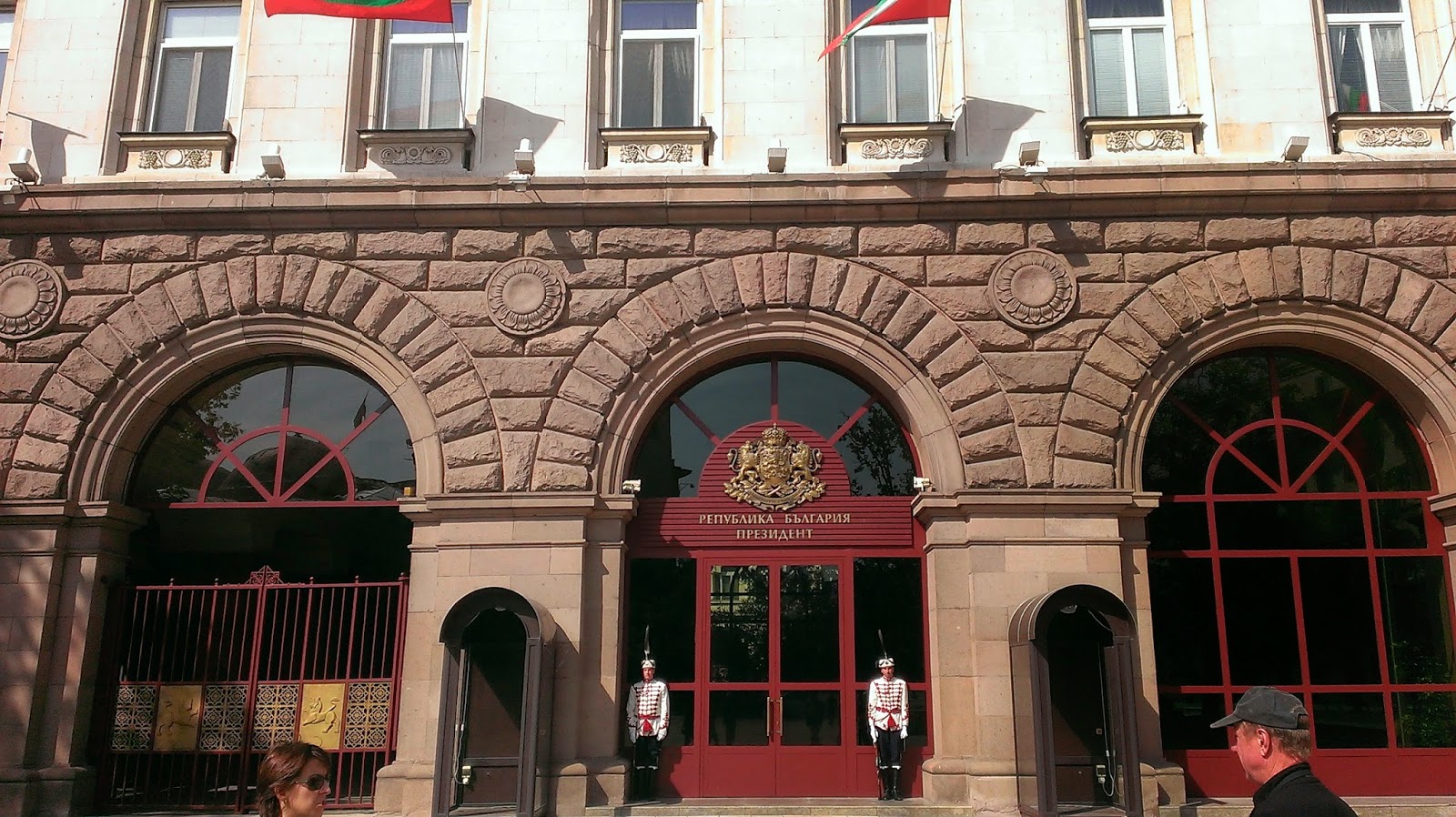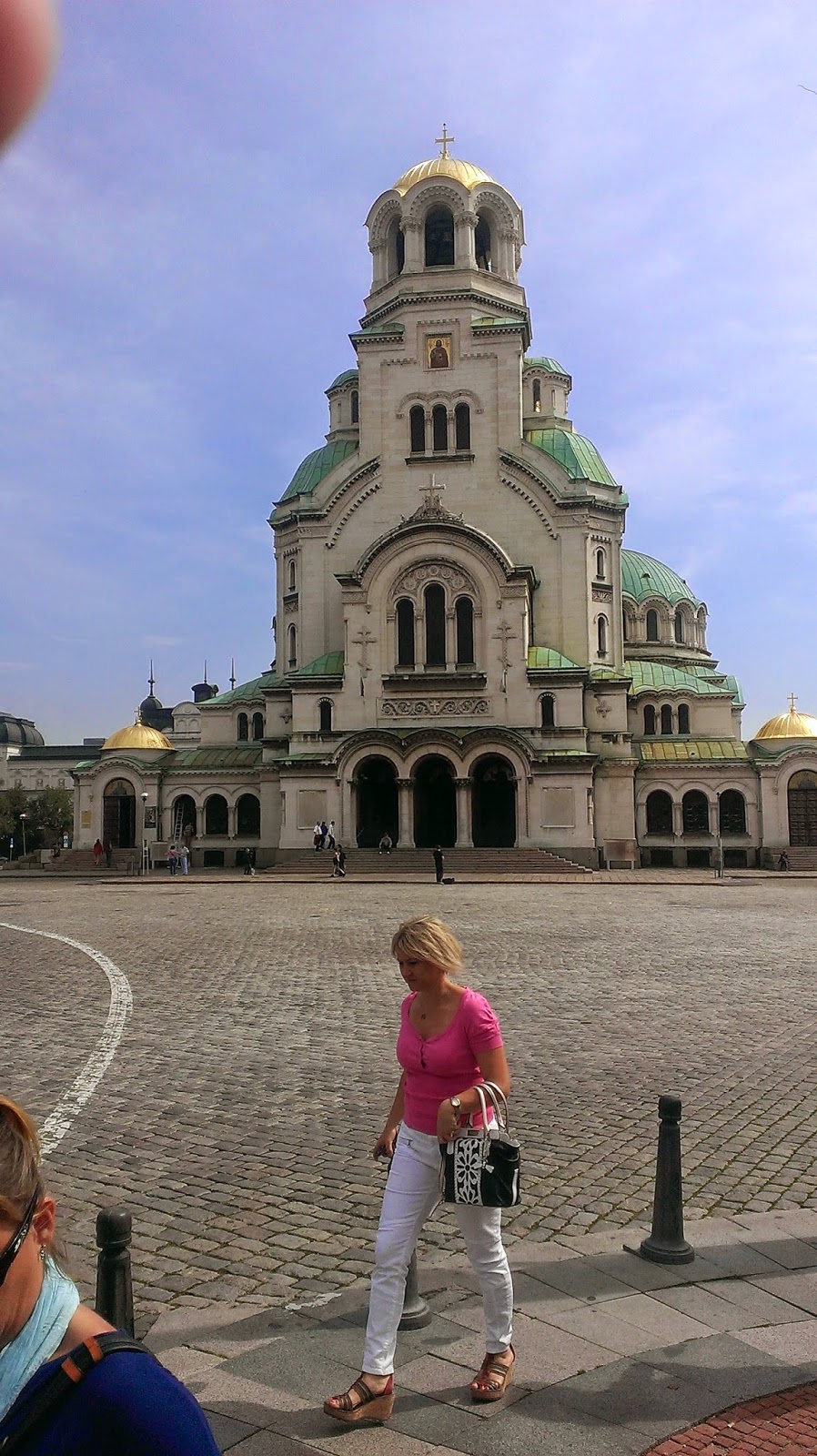After breakfast, we met at 10:00 a.m. and set out for a three hour walking tour of the city of Sofia. Our tour guide was Denitsa or Deni (a different Denitsa unrelated to Denitsa the HFH coordinator). Deni is working on her PhD in Russian history and thesis is about rent history since the fall of the Berlin Wall.
We started out at the Bulgarian Hall of Justice with a brief history of the three Bulgarian Republics and the intervening conquerors (Romans, Ottomans, Russians). This was the ancient area called Thrace and the city was originally called Serdika. Just as the USA has the bald eagle as a national symbol, Bulgaria has the lion (lev in Bulgarian). The lion is on the coat of arms and the currency, which is called the lev.
We then went on to see some of the variety of religious institutions in Sofia - there is a Catholic cathedral, a Jewish Temple, a Muslim Mosque and a Bulgarian Orthodox cathedral. All four co-exist and even though Bulgaria entered the war on the side of the Germans, Bulgarian Jews were never deported or sent off to gas chambers.
Where a statue of Lenin looked across the square to what was then the Communist Party Headquarters, there is no a statute of Saint Sofia - which is ironic, since she never lived in Sofia, was opposed to pagan symbols (which are included on the statue) and has more of her bust showing than is appropriate for the Bulgarian Orthodox church.
Deni had us look at this casino because it has the coat of arms for the city of Sofia and explained the four symbols on the coat.
Sofia was built like a cake, with the Roman ruins built upon in the dark ages and that was then built upon in modern times. They are now working on uncovering the past for all to see. In this square, my feet were at the Roman level, my body at the dark ages, and my upraised arms at the 21st century.
 |
| Note the minaret on the mosque in the distance and the Roman walls being excavated covered with sheets of plastic |
 |
| The fifteenth century church |
 |
| Another view of the fifteenth century church |
 |
| Twenty first century entrance to the metro |
 |
| More twenty first century evidence - the golden arches of MacDonalds |
 |
| The Muslim Mosque |
 |
| The Jewish Temple with the black roof |
 |
| A police vehicle watching over the passing tourists |
We then went to the National Theatre building and the beautiful fountain in front. There is also a National Opera House, but we did not go there.
Sofia is famous for its thermal waters - at the 20 or so public fountains, people were filling up bottles of the warm water, and we sampled it as well. It had a bit of a metallic taste and was about 27 degrees Celcius.
The public baths were an integral part of the social life, as when they were built, most people did not have baths at home. People gathered here, with women and men using separate ends of the building, each with their own pool. The building is now being rehabbed and will be a museum.
We then walked through the lower level of these large Soviet era buildings which were built upon Roman ruins. They have exposed the ruins in the subway entrances and underground passages. These former Soviet buildings on the left and right are now government ministries and the former Communist Party headquarters in the rear is now Parliament.
 |
| The sign on the right says Central Department Store - that was the Soviet era main shopping store where people stood in line for hours to get what little was available |
Next we went to see the Royal Guard - we did not get to see the changing of the guard, but they have some nice uniforms. They must be between 1.78 and 1.82 meters and have blue eyes. Until the government was sued a few years ago by a woman, there were always men.
In the courtyard behind the guards, there was another ancient church and Roman ruins - Ancient Temple Rotunda, St. George Martyr George the Victory Bearer.
We walked through many beautiful gardens.
We ended our tour at the St. Alexander Nevski Cathedral - it can hold 5,000 people. To say the least, it is very beautiful and ornate.
The Aya Sofia is across the street from St. Alexander Nevski. It is older and much smaller.
We then went to the Mama Mia Espresso Cafe for a lunch of sopska salad, Wymehcko beer (a third Bulgarian beer), entree of chicken, fries and green salad, and a dessert of blueberry cake and ice cream.









































The rule that the guards' eyes must be a certain color caught my eye!
ReplyDeleteYour photos and write-ups are wonderful. I feel like I am there with you - learning about their currency, food and city's landscape. The 15th century church is particularly pretty.
ReplyDeleteI am glad you are enjoying it. Sofia is a most intriguing place and I am learning more about the area. Look up Thracians and Dacians and see what you can learn about the long ago residents of this part of the world.
Delete